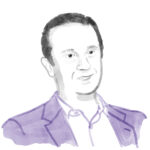Amidst a number of changes in the industry, Marc Hengen, Managing Director, Chairman of the Executive Committee at the Luxembourg Insurance and Reinsurance Association (ACA), gives us an insight into the insurance and reinsurance industry.


Luxembourg was very quickly put on to the map of possible locations where it would make sense to relocate to after Brexit.
LFF: Luxembourg is increasingly becoming a non-life insurance hub in the EU, as major insurance companies set up their post-Brexit EU headquarters here. What were the main reasons for such relocations and what are the challenges ahead to further consolidate this role in the EU?
MH:
After the referendum, it was more or less foreseeable that the UK would not be a part of the single market anymore. With the UK being an important insurance market not only at national level, but also at international level, companies who were selling their contracts to other European countries from the UK quickly realised that in order to continue serving their European clients and developing markets, they would need to relocate at least their European activities to another EU country. It so happens that Luxembourg has been a specialist in this, though mainly for life insurance, for almost 30 years now. So, Luxembourg was very quickly put on to the map of possible locations where it would make sense to relocate to after Brexit. In addition, having not only a dedicated regulator, but also a regulator who has a lot of experience in regulating an international and European-wide activity was seen as a big advantage. Bear in mind that, for these companies, the market is the European Union; the future of the European market and the free flow of services, which is the aim of the European treaties, will be key to continuing that business model.
Though the relocations have been going on since the referendum, 2019 was the first year in which these new companies did all their business from Luxembourg after having transferred all the contracts to their newly created Luxembourg head offices, which led to Luxembourg observing a big jump in premiums last year.
LFF: Over the past few months, Covid-19 has thrust the world into unprecedented times. How has this global pandemic affected the national and international insurance industry? And how do you think can the industry support the economic and sustainable recovery in the aftermath of the pandemic?
MH:
The recent crisis has affected the way we work from an organisatioinal point of view. Almost overnight, 90 percent of employees had to work from home, which is a new way of working and had to be organised quickly. The outcome was very positive during the crisis. In the immediate aftermath of the crisis outbreak, there was also the economic and financial crisis behind. Financial crisis, due to the valuations and the losses on the stock markets, had a heavy impact on most insurers as underlying assets depreciated substantially; in some cases, by 30 percent. During the crisis and the lockdown, there was almost no commercial activity, so no new business coming in for insurers. The insurance industry was nevertheless able to maintain all client services, allowing clients to receive compensations for ongoing claims and the handling of client requests remotely through phone calls, e-mails or newer tools for online conferences. This happened in both the local and international markets.
As regards to how the insurance industry can and should support the economic recovery in the aftermath, we have observed that Luxembourg insurers and reinsurers have been massively subscribing to government bonds – even at a negative interest rate – to support the Luxembourg recovery measures. The insurance business is based on long-term business, making the infrastructure investments which are needed quite suitable for the investment aims of insurers in search for stable long-term investment opportunities.
LFF: Further to the pandemic, the insurance industry has recently been facing a number of additional challenges. How have these challenges impacted the insurance industry at the national and international level?
MH:
We have observed a shift from guaranteed return or fixed income life insurance contracts to more unit linked products in the search of yield and return on investment. I don’t think that low interest rates alone are to be blamed. Quite a few sectors have been shaken during the recent crisis and so the investment strategies for many clients have changed and been adapted in one or the other way.
There are also a lot of upcoming regulations, such as the revision of the Solvency II directive, which regulates the solvency ratios insurers need to have. There are also several upcoming initiatives on client information, especially on the communication of ESG criteria towards clients before the signing of contracts, as well as during the life of these contracts. The insurance business is heavily regulated and will not likely be any less heavily regulated in the future, which is making the business more and more complicated. What we hope is that the current crisis will not be the source of another regulatory wave and that it is not taken as a pretext to limit the possibilities the European Union and the single market offer insurers and reinsurers
LFF: Due to the persisting low interest rate environment, the insurance industry has been experimenting with higher yielding investment classes, such as alternative investments. What has the insurance industry’s approach toward alternative investments been so far? Will this trend continue?
MH:
First of all, low interest rates are not a new phenomenon, but now they have become negative interest rates and very few clients are willing to pay money for capital to be held somewhere. Yield has always been linked to perhaps a less conservative investment strategy. The exposure to risk is part of the core activities and the model of each insurer and reinsurer depends on their positioning policy. Yield is expected by clients, which also pushes them to take certain risks. 2018 and 2019 were fairly good years for non-traditional or non-conservative investments. I do think that clients will continue in the direction of higher yielding investment classes in the future and one of the reasons there have been quite a lot of reallocations or readjustments of investment strategies during the crisis is due to the volatility of markets in certain areas of activity.
LFF: The insurance industry plays a crucial role in the assessment of emerging risks such as climate risk. Could you tell us more about the role the insurance industry plays in green and sustainable finance?
MH:
Insurers have a twofold responsibility. First of all, insurers and reinsurers are there to tackle the consequences of climate risks and we had quite a dramatic example here in Luxembourg August last year when a tornado struck the south of our country. Insurances took over the financial consequences of this tornado.
The second aspect is that insurers collect a lot of data on regional tendencies, and are then able to use those data to create models and suggest a number of preventive measures to tackle changes linked to climate risk. One must also take into consideration whether climate risk can be mitigated by a more sustainable way of living? This will require a lot of investment. We have observed that environmental criteria when looking for investments is becoming increasingly important not only to clients, but also to insurers and reinsurers. It is important to note that the perception of green investments as being not secure, having no return and not being considered as real investments has completely changed. Today, it is very clear that ESG investments can very well have a positive return and are definetly seen as must have investments.
LFF: Technology and innovation are also driving fundamental changes across the insurance industry. How has fintech and digital innovation impacted the insurance industry? How do you think will Insurtechs and the provision of cyber insurance services change the traditional insurance industry landscape?
MH:
There are two main drivers of digitalisation and innovation. First, it is based how insurers interact with their clients or intermediaries. New digital tools are being asked for and they are appreciated by clients: it is a way of treating your client well and meeting his or her expectations. Secondly, it is also a question of efficiency with digitally automated functions. Insurers have the possibility to work more efficiently and with a greater profitability than before, as long as they comply with regulations. Automatisation of some services with lesser added value or which allow 24/7 access is key today and there are a large number of domains in which new services and solutions can, and are, being offered by Insurtech companies. We have seen that very often, these services are used in cooperation with the “traditional” insurance companies.
Although robot advisors do exist, human interaction remains important, especially in more complex situations. Nevertheless, we have noticed a decrease of importance of human interaction with younger clients, however, advice has not yet reached the point of being 100% automated.






